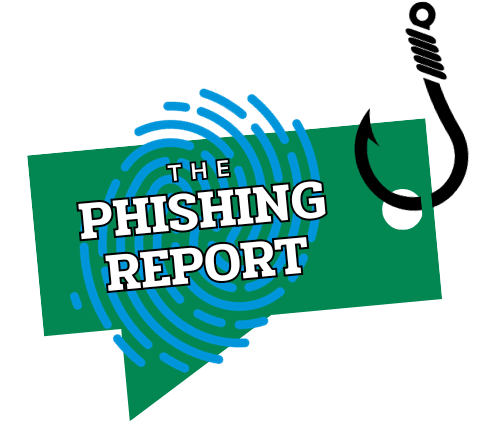When it comes to remote monitoring, understanding the unique challenges of your industry is vital. You can’t just apply a one-size-fits-all solution; it needs to be tailored to your specific needs. Selecting the right tools that integrate seamlessly with your existing systems and guarantee scalability is also essential. But that’s just the beginning. Custom alerts, compliance, and regular optimization play significant roles in creating an effective monitoring strategy. So, what are the five key tips you should consider to enhance your approach and guarantee efficiency? Let’s explore that further.
Key Takeaways
- Understand the unique challenges of your industry to tailor monitoring solutions effectively.
- Select tools that integrate seamlessly with existing systems and are scalable for future needs.
- Implement custom alerts with defined thresholds to ensure timely responses to critical incidents.
- Prioritize compliance and security by regularly updating systems and training teams on protocols.
- Continuously review performance metrics and gather team feedback to optimize monitoring processes.
Understand Unique Industry Needs
When diving into remote monitoring, it’s essential to recognize the unique needs of your industry. Each sector faces distinct industry challenges that demand tailored monitoring solutions. For instance, healthcare requires compliance with strict regulations and real-time patient data tracking, while manufacturing may focus on equipment efficiency and predictive maintenance.
Understanding these specific requirements helps you identify the right metrics to monitor. You’ll need to assess how various factors like data volume, frequency of updates, and response times impact your operations. For example, in the energy sector, monitoring solutions must account for fluctuating demand and environmental conditions.
Moreover, consider the scalability of your monitoring solutions. As your industry evolves, your monitoring needs will likely change, necessitating adaptable technologies. Engaging with industry experts or conducting thorough research can provide insights into effective practices and emerging trends that may influence your approach.
Choose the Right Tools
Selecting the right tools for remote monitoring is crucial to addressing the unique needs of your industry. You need to focus on tool selection that aligns with your specific operational requirements. Begin by evaluating the key functionalities that your business demands—whether it’s data collection, real-time reporting, or system alerts. Each industry has distinct challenges; therefore, your tools should facilitate effective solutions.
Consider the importance of software integration. Your chosen tools should seamlessly connect with existing systems to enhance workflow efficiency. This integration can help eliminate information silos, enabling your team to access essential data in one place. Evaluate compatibility with your current software and any potential costs associated with new installations or upgrades.
Don’t overlook scalability in your tool selection. As your business grows, your monitoring needs will evolve. Choose tools that can adapt to these changes, ensuring they remain effective over time. Finally, engage your team in the selection process. Their insights can provide valuable perspectives on practical usability and functionality. By making informed decisions regarding tool selection and software integration, you’ll position your business for success in remote monitoring.
Implement Custom Alerts
Custom alerts are vital for maintaining effective remote monitoring tailored to your business needs. By implementing custom notifications, you can guarantee that you’re always informed about significant changes or issues, allowing for swift action. Setting appropriate alert thresholds helps prevent overlooking important incidents that could impact your operations.
Here are four key benefits of implementing custom alerts:
- Timely Response: Receive immediate notifications when conditions exceed your predetermined thresholds, allowing you to act quickly.
- Operational Efficiency: Streamline your workflow by filtering out noise from irrelevant alerts and focusing on what’s truly important.
- Informed Decision-Making: Gain insights from data trends through alerts that highlight anomalies, empowering you to make data-driven decisions.
- Reduced Downtime: Proactively address potential issues before they escalate, minimizing downtime and preserving productivity.
Ensure Compliance and Security
Ensuring compliance and security in remote monitoring systems isn’t just a best practice; it’s essential for protecting your business and maintaining trust with clients. You need to prioritize data protection by implementing robust security measures that align with industry-specific regulatory standards. This includes understanding regulations like GDPR, HIPAA, or PCI-DSS, depending on your sector.
Start by conducting a thorough risk assessment to identify vulnerabilities within your remote monitoring system. Regularly update your software and hardware to mitigate potential security threats. Encrypt sensitive data both in transit and at rest, ensuring that unauthorized access is minimized.
Furthermore, establish clear access controls, limiting data visibility to only those who absolutely need it. Training your team on compliance requirements and security protocols is equally important. Make sure everyone understands their role in safeguarding sensitive information.
Lastly, document all compliance efforts and security measures you’ve implemented. This not only demonstrates your commitment to data protection but also provides a reference point for audits or inspections. By taking these proactive steps, you can foster a secure environment that complies with regulatory standards while reinforcing your clients’ confidence in your operations.
Regularly Review and Optimize
To maintain a high-performing remote monitoring system, it’s essential to regularly review and optimize your processes. This isn’t just about keeping things running; it’s about maximizing efficiency and ensuring your system adapts to changing needs.
Here are four key areas to focus on:
- Establish Feedback Loops: Create mechanisms that allow your team to easily provide input on system performance. This helps identify issues early.
- Analyze Performance Metrics: Regularly track metrics relevant to your operations. This data will highlight areas for improvement and validate successful strategies.
- Implement Continuous Improvement: Adopt a mindset of ongoing enhancement. Use the insights from feedback and metrics to refine your processes continually.
- Engage Stakeholders: Involve team members and clients in discussions about system performance to gather diverse perspectives and foster a collaborative environment.
Frequently Asked Questions
How Do I Train My Team on Remote Monitoring Tools?
To train your team on remote monitoring tools, focus on interactive remote monitoring training sessions. Encourage team engagement through hands-on practice, real-time feedback, and discussions that address challenges, ensuring everyone feels confident using the tools effectively.
What Are Common Challenges in Remote Monitoring for Specific Industries?
In the world of remote monitoring, data security’s a fortress while system compatibility acts as the bridge. You’ll often face challenges like integrating diverse technologies and ensuring sensitive information remains protected across different platforms and industries.
Can I Integrate Existing Systems With New Remote Monitoring Tools?
Yes, you can integrate existing systems with new remote monitoring tools. Focus on system compatibility and employ effective integration strategies, like APIs or middleware, to guarantee seamless communication and functionality between your current and new systems.
How Do I Measure the Effectiveness of Remote Monitoring?
Think of remote monitoring as a compass guiding your operations. To measure effectiveness, analyze performance metrics, track response times, and assess data analysis outcomes. Adjust strategies based on insights to guarantee you’re steering in the right direction.
What Is the Typical Cost of Implementing Remote Monitoring Solutions?
The typical cost of implementing remote monitoring solutions varies, depending on your needs. Consider a detailed cost breakdown, including hardware, software, and maintenance, while aligning these expenses with your budget considerations for ideal resource allocation.
Final Thoughts
In summary, mastering industry-specific remote monitoring can feel like traversing a labyrinth, but these five strategies simplify the process. By understanding your unique needs, choosing the right tools, implementing custom alerts, ensuring compliance, and regularly reviewing your systems, you can create a robust monitoring framework. Remember, the key to success lies in continuous improvement and adapting to change. Embrace these tips, and you’ll elevate your remote monitoring game to unprecedented heights!

